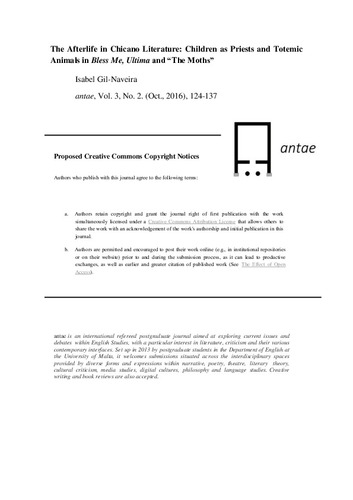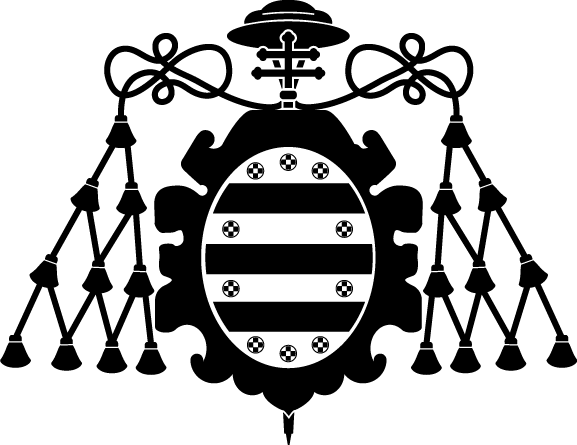The Afterlife in Chicano Literature: Children as Priests and Totemic Animals in Bless Me, Ultima and “The Moths”
Author:
Subject:
Future life in literature
Reincarnation in literature
American literature -- Mexican American authors
Publication date:
Editorial:
University of Malta
Citación:
Descripción física:
Abstract:
The concept of the afterlife and the relation with the dead varies from one culture to another. In this sense, from the years of the Civil Rights Movement onwards, Chicano literature has re-appropriated Mesoamerican and Native-American beliefs that differ from those of Catholics and Anglicans alike. Rudolfo Anaya’s novel Bless me, Ultima and Helena María Viramontes’s short story “The Moths” share an atmosphere full of myths, beliefs and mysticism where the main characters–a boy, a girl and their grandmothers–establish a strong connection with the natural and the unnatural. Unlike most criticism, which focuses on the rites of passage from childhood into adulthood and the helping role of the grandmothers, this paper analyses the rite of passage of the grandmothers to the afterlife, emphasising the deconstruction of the ontology of life and death. Through two main mechanisms—the role of the children as priests and the relation that exists between the grandmothers’ souls and their totemic animals—this paper highlights how the authors address the cyclical component of time and history and stress the connection between the death passage and rebirth for the Chicano community.
The concept of the afterlife and the relation with the dead varies from one culture to another. In this sense, from the years of the Civil Rights Movement onwards, Chicano literature has re-appropriated Mesoamerican and Native-American beliefs that differ from those of Catholics and Anglicans alike. Rudolfo Anaya’s novel Bless me, Ultima and Helena María Viramontes’s short story “The Moths” share an atmosphere full of myths, beliefs and mysticism where the main characters–a boy, a girl and their grandmothers–establish a strong connection with the natural and the unnatural. Unlike most criticism, which focuses on the rites of passage from childhood into adulthood and the helping role of the grandmothers, this paper analyses the rite of passage of the grandmothers to the afterlife, emphasising the deconstruction of the ontology of life and death. Through two main mechanisms—the role of the children as priests and the relation that exists between the grandmothers’ souls and their totemic animals—this paper highlights how the authors address the cyclical component of time and history and stress the connection between the death passage and rebirth for the Chicano community.
ISSN:
Collections
- Artículos [37541]
- Filología Inglesa, Francesa y Alemana [590]
Files in this item





